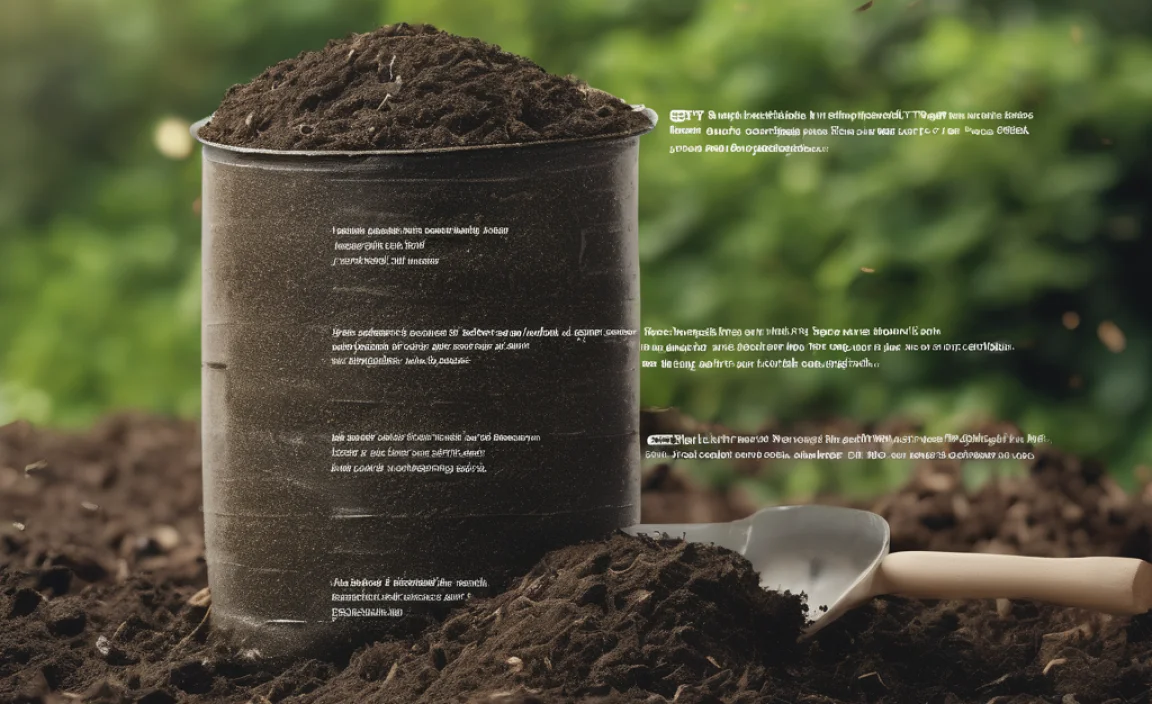A composting pit can be a fantastic way to turn kitchen scraps and yard waste into rich soil for your garden. But sometimes, it can start to smell… not so great. If you’re noticing an unpleasant odor coming from your compost pit, don’t worry! It’s a common issue, and chances are you can fix it easily. This guide will walk you through the simple steps to get your compost smelling fresh and working its best. Let’s banish that pit composting odor for good!
Banishing Pit Composting Odor: Simple Solutions for a Fresh Pile
Hey neighbors! Troy D Harn here from TopChooser. We all want to do our part for the planet and get that amazing, nutrient-rich compost for our gardens. Pit composting is a straightforward method, but that occasional whiff of something… less than pleasant… can really put a damper on things. If your compost pit is giving off a strong, offensive smell, it usually means something in the composting process is a little out of balance. But the good news is, these problems are almost always fixable with a few simple adjustments. Think of it like tuning up a garden tool – a little tweak here and there, and it runs smoothly again. We’ll go through exactly what might be causing the smell and how to fix it, step-by-step. No complicated science, just practical tips to get your compost pile healthy and odor-free.
Why Does My Compost Pit Smell? Understanding the Culprits of Pit Composting Odor
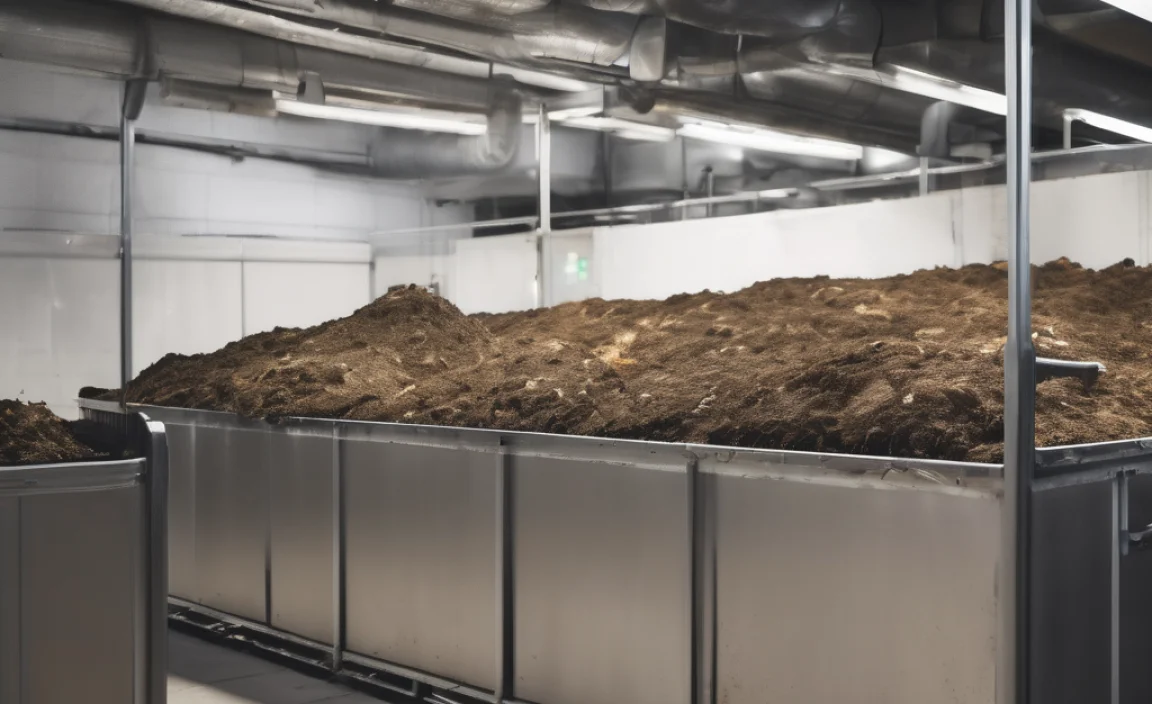
Before we jump into fixes, let’s quickly understand why a compost pit might start to smell. It’s usually not rocket science, but rather a sign that the tiny microbes working hard to break down your waste are a bit unhappy. There are two main culprits:
- Too Much Moisture: When things get waterlogged, the good aerobic (oxygen-loving) microbes slow down. This creates conditions where anaerobic (oxygen-hating) microbes take over. These guys tend to produce really stinky gases like hydrogen sulfide – that rotten egg smell.
- Too Many “Greens” (Nitrogen-Rich Materials): “Greens” are things like fruit and veggie scraps, grass clippings, and coffee grounds. While essential for compost, too many without enough “browns” can lead to a nitrogen-heavy, wet, and smelly pile. It’s like a rich stew that’s a bit too concentrated.
So, a stinky compost pit usually means it’s either too wet, too heavy on the nitrogen side, or both. The good news is we can fix these imbalances easily!
The “Smell Test”: What Kind of Odor Are You Dealing With?
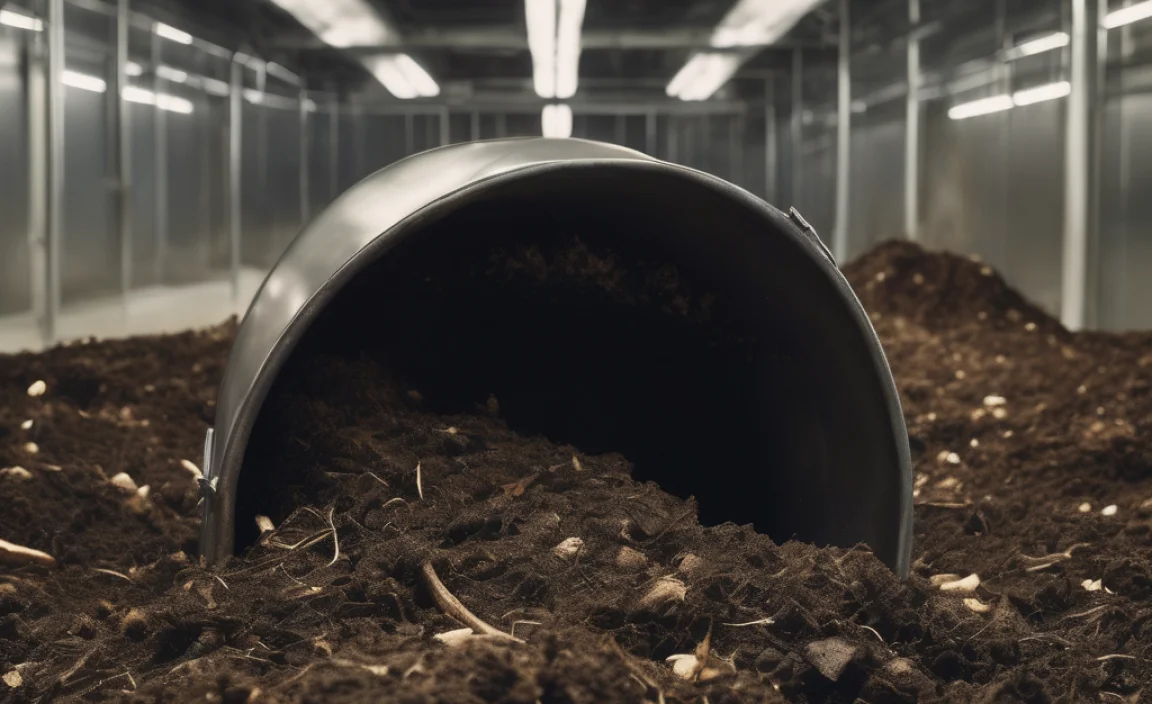
The type of smell can give you clues about what’s gone wrong. Knowing this helps us target the solution more effectively:
- Rotten Egg/Sulfur Smell: This is the classic sign of anaerobic decomposition, meaning your pile is too wet and lacking air.
- Ammonia/Urine Smell: This usually means you have too many “green” (nitrogen-rich) materials and not enough “brown” (carbon-rich) materials to balance it out.
- Sour or Vinegar Smell: This can happen if the pile is too acidic or too wet, again pointing to anaerobic conditions.
- Musty or Earthy Smell: This is actually a good sign! It means your compost is breaking down nicely with plenty of air and a good balance of materials. If you smell this, you’re doing great!
Proven Solutions to Eliminate Pit Composting Odor
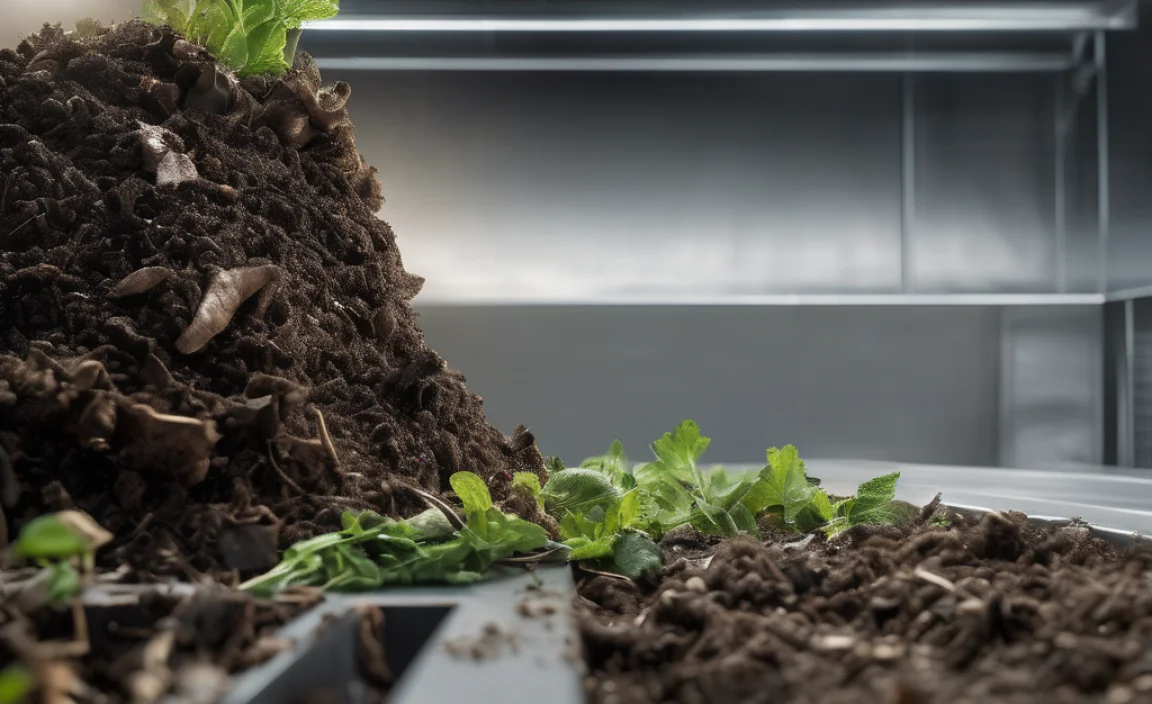
Alright, let’s get down to business. If your compost pit is emitting any of those less-than-ideal smells, here are some practical, easy-to-implement solutions. We’ll tackle the most common issues first.
Solution 1: Add More Air (Aeration Is Key!)
This is often the most critical step for eliminating bad odors. Anaerobic microbes (the smelly ones) thrive in stagnant, airless conditions. Giving your pile air encourages the good aerobic microbes to do their work efficiently and without stink!
How to Aerate Your Compost Pit:
There are a few ways to get air into your pit:
- Turning the Pile: This is the most effective method. Use a pitchfork or a compost aerator tool to mix the materials. Break up any clumps and try to bring the material from the outside to the inside and vice-versa. Aim to turn your pile at least once every week or two, especially if it’s smelling.
- Using a Compost Aerator Tool: These are specialized tools designed specifically for this job. They’re less strenuous than a pitchfork and can be very effective at poking holes and lifting materials to improve airflow. You can find them at most garden supply stores or online. For a visual guide and to see different types, check out resources from your local agricultural extension office: NC State Extension – Composting is a great place to start.
- Adding “Chunky” Brown Materials: Sometimes, your pile just needs a bit of structure for air to circulate. While not a direct aeration method, adding materials like small twigs, wood chips, or straw can create air pockets as the pile breaks down.
Solution 2: Balance “Greens” and “Browns”
Compost works best when you have a good mix of nitrogen-rich “green” materials and carbon-rich “brown” materials. Too much green without enough brown can overload the pile with nitrogen and lead to that ammonia smell or a generally mushy, anaerobic situation.
What are “Greens” and “Browns”?
Understanding the ratio is super important:
- Greens (Nitrogen-rich): Fruit and vegetable scraps, coffee grounds, tea bags, fresh grass clippings, plant trimmings. These provide nitrogen and moisture, helping the pile heat up.
- Browns (Carbon-rich): Dried leaves, straw, shredded cardboard and paper (uncoated), sawdust, small twigs, wood chips. These provide carbon and bulk, helping with structure, airflow, and preventing clumping.
How to Achieve the Right Balance:
A common recommendation is a ratio of about 2 parts Browns to 1 part Greens by volume. Don’t stress too much about exact measurements – it’s more about the general idea.
If your pile smells like ammonia, it’s a clear sign you need more browns. Simply add a good layer of dried leaves, shredded paper, or straw on top of or mixed into the smelly areas. If it’s already too wet and smelly (rotten egg), adding dry browns will also help absorb excess moisture.
Solution 3: Manage Moisture Levels
We’ve touched on this, but it’s worth its own point. Compost needs to be moist, like a wrung-out sponge, but not soggy. Too much water suffocates the beneficial microbes and leads to nasty smells.
How to Fix a Soggy Compost Pit:
- Stop Adding Wet Materials: If your pile is already saturated, hold off on adding more wet green scraps until it dries out a bit.
- Add Dry Browns: As mentioned, shredded cardboard, dry leaves, straw, or sawdust are excellent for soaking up excess moisture. Mix them in thoroughly.
- Improve Drainage: Ensure your pit isn’t sitting in a puddle. If water tends to collect, you might need to dig a few small drainage holes at the bottom or ensure the site itself has good drainage.
- Cover the Pile (Sometimes): If heavy rains are a persistent problem, consider a loose cover (like a tarp with gaps for air or a plywood sheet propped up) to prevent it from becoming waterlogged. Make sure it still allows air circulation.
Solution 4: Introduce a Carbon “Booster”
If your compost is producing less than ideal smells, it might be lacking enough carbon to help balance the nitrogen and provide structure. Adding a carbon-rich material can quickly improve things.
Good Carbon Boosters:
- Shredded Cardboard or Newspaper: uncoated, uncolored paper is best.
- Dried Leaves: A fantastic free resource in the fall!
- Straw or Hay: Look for weed-free options.
- Wood Chips or Sawdust: Use in moderation and ensure they are untreated.
Simply mix a good amount of these materials into the smelly parts of your compost pit. This helps absorb moisture, improves airflow, and balances the nitrogen.
Solution 5: Burying Food Scraps
Food scraps are a prime ingredient for attracting pests and can sometimes contribute to odors if they aren’t decomposing quickly enough. A simple habit can help:
Always bury your fresh kitchen scraps a few inches deep within the compost pile, preferably in the warmer, active center. Cover them completely with existing compost or a layer of brown material. This discourages pests and helps the scraps break down more efficiently without releasing strong odors to the surface.
Solution 6: Consider a Balanced Compost Starter (Optional)
If your compost pit has been giving you trouble for a while, or if you’re starting a new one and want to give it a good head start, a compost starter can help. These are usually packets of beneficial microbes and enzymes designed to speed up the decomposition process and promote a healthy, odor-free environment.
You can find these at garden centers. Follow the package instructions – typically, you just sprinkle it over a layer of compostable material. While not strictly necessary, a starter can be a good boost for struggling piles. It’s an extra tool to help those little decomposers do their job efficiently.
What NOT to Compost (To Prevent Future Smells)
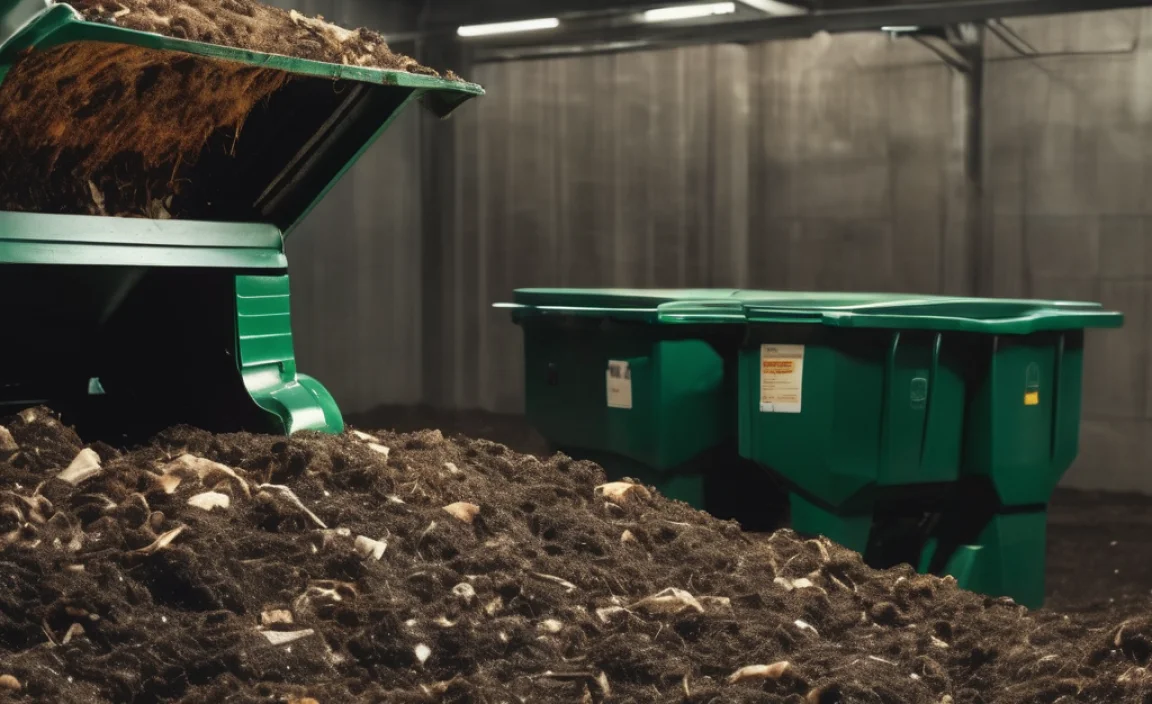
Sometimes, the best way to solve a problem is to prevent it from happening in the first place. Certain items can make your compost pit unusually smelly or attract unwanted guests. For a comprehensive list of what you shouldn’t compost, consider resources from your local municipal waste management or university extension offices. For instance, the EPA’s composting page offers excellent guidelines.
Generally, avoid:
- Meat, fish, and dairy products: These can attract pests and create strong, unpleasant odors.
- Oily or greasy foods: They can slow down decomposition and become rancid.
- Diseased plants or weeds that have gone to seed: You don’t want to spread problems in your garden.
- Pet waste (from cats or dogs): Can contain pathogens.
- Chemically treated wood or yard waste: Avoid introducing toxins.
Troubleshooting Common Pit Composting Odor Scenarios
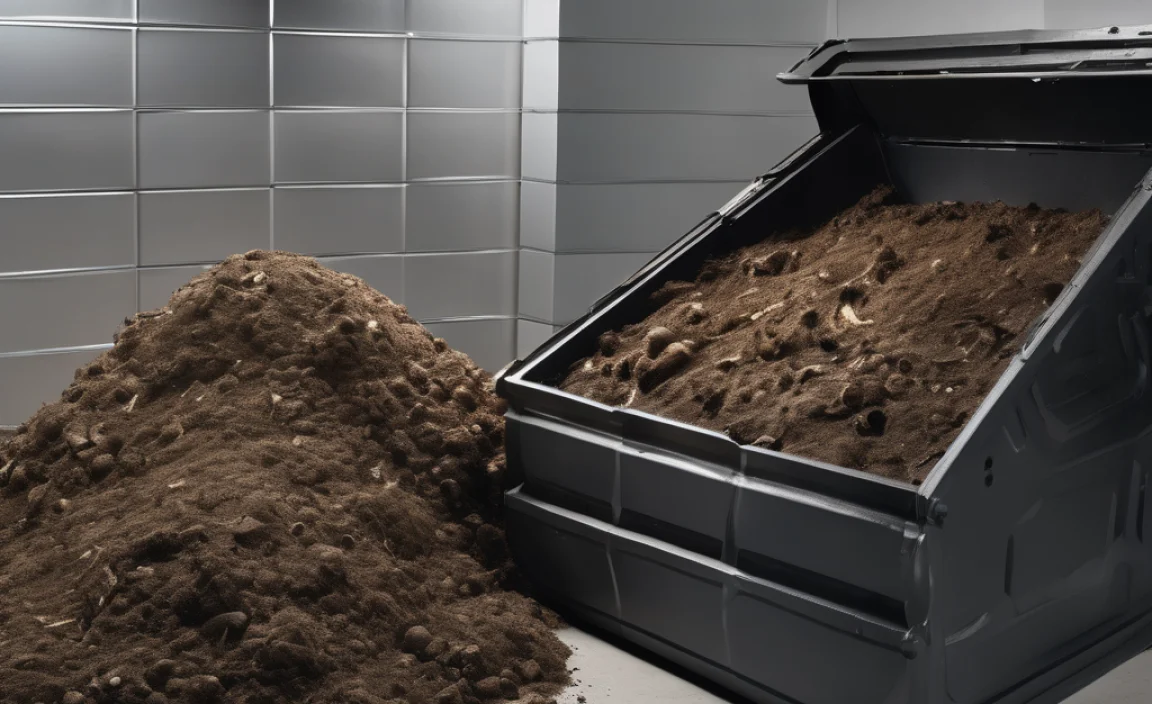
Let’s say you’ve tried a few things, and you’re still encountering a smell. Here’s a quick rundown of common issues and their likely fixes:
| Problem/Smell | Likely Cause | Primary Solution | Secondary Solutions |
|---|---|---|---|
| Rotten Egg Smell | Too wet, lack of air (anaerobic conditions) | Turn the pile vigorously. Mix in plenty of dry brown materials (leaves, cardboard). | Ensure good drainage. Stop adding wet materials. Bury food scraps. |
| Ammonia/Urine Smell | Too many “greens” (nitrogen), not enough “browns” | Add a generous amount of dry brown materials (leaves, shredded paper, straw). Mix well. | Turn the pile to improve air circulation. |
| Sour/Vinegar Smell | Pile is too wet or too acidic, leading to anaerobic conditions | Add a layer of garden lime or wood ash (use sparingly) to neutralize acidity. Mix in dry browns. | Turn the pile thoroughly. Ensure good drainage. |
| Pesky Flies/Fruit Flies | Exposed food scraps, overly wet pile | Bury all food scraps deep within the pile and cover them with browns. | Turn and aerate the pile. Reduce moisture if soggy. Avoid adding meat/dairy. |
Maintaining a Healthy, Odor-Free Compost Pit
Once you’ve fixed the immediate smell problem, the key is to maintain good composting practices to prevent it from coming back. It’s all about keeping that ecosystem happy!
Regular Aeration
Make turning your compost pit a regular habit. Aim for at least once every week or two. This is insurance against anaerobic conditions and odor.
Balanced Carbon to Nitrogen Ratio
As you add materials, try to think in terms of browns and greens. Don’t let large amounts of green materials pile up without being balanced by browns. Layering them as you add them can help, or simply mix them in.
Right Moisture Levels
Check the moisture content regularly. It should feel like a damp sponge. If it’s too dry, add a little water and mix. If it’s too wet, add more browns and turn it.
Burying Smelly Items
Always bury kitchen scraps, even if your pile isn’t currently smelling. This is a proactive step that helps manage odors and deter pests.
Conclusion: Back to a Happy, Healthy Compost Pile
Pit composting odor doesn’t have to be a persistent problem. By understanding the basics of how compost works – the need for air, the right balance of greens and browns, and moderate moisture – you can tackle any smell that pops up. Remember, a bit of turning and adding some dry materials usually does the trick. It’s a rewarding process that gives back to your garden, and with these simple, practical solutions, you can ensure your compost pit is a source of nutrient-rich soil, not an olfactory offense. Happy composting, everyone!
Frequently Asked Questions About Pit Composting Odor
Q1: Can I use a compost accelerant to speed things up and prevent smells?
A: Yes, compost accelerators or starters can help. They introduce beneficial microbes that break down materials faster, potentially reducing odor-causing conditions. However, they aren’t a magic bullet; good practices like aeration and balancing greens/browns are still essential.
Q2: My compost pit smells like a landfill. What’s the main issue?
A: A landfill smell often indicates serious anaerobic decomposition. This usually means the pile is compacted, overly wet, and lacking air. Your top priorities are to turn it thoroughly, mix in a lot of dry brown materials (like leaves or shredded cardboard), and ensure it has good drainage.
Q3: How often should I turn my compost pit?
A: For best results and to prevent odors, aim to turn your compost pit at least once every 1-2 weeks. If it’s actively smelling or you’ve recently added a lot of wet materials, you might want to turn it more frequently.
Q4: Is it normal for compost to smell a little earthy?
A: Absolutely! A healthy, active compost pile should have a pleasant, earthy, or mushroom-like smell. If you’re getting this scent, your microbes are happy, and the decomposition process is working well.
Q5: I added a lot of grass clippings, and now it smells bad. What did I do wrong?
A: Fresh grass clippings are high in nitrogen (“greens”). A large amount of them without enough carbon (“browns”) can become dense, wet, and anaerobic, leading to odors. Mix in plenty of dry leaves, shredded paper, or straw to balance the nitrogen and improve airflow.
Q6: Can I compost in a very small space without it smelling?
A: Yes, smaller compost systems like tumblers or bins can work well if managed properly. The key principles of aeration, moisture control, and balancing greens/browns still apply, but you might need to be more diligent with turning and adding materials in smaller batches.
.lwrp.link-whisper-related-posts{
margin-top: 40px;
margin-bottom: 30px;
}
.lwrp .lwrp-title{
}.lwrp .lwrp-description{
}
.lwrp .lwrp-list-container{
}
.lwrp .lwrp-list-multi-container{
display: flex;
}
.lwrp .lwrp-list-double{
width: 48%;
}
.lwrp .lwrp-list-triple{
width: 32%;
}
.lwrp .lwrp-list-row-container{
display: flex;
justify-content: space-between;
}
.lwrp .lwrp-list-row-container .lwrp-list-item{
width: calc(25% – 20px);
}
.lwrp .lwrp-list-item:not(.lwrp-no-posts-message-item){
max-width: 150px;
}
.lwrp .lwrp-list-item img{
max-width: 100%;
height: auto;
object-fit: cover;
aspect-ratio: 1 / 1;
}
.lwrp .lwrp-list-item.lwrp-empty-list-item{
background: initial !important;
}
.lwrp .lwrp-list-item .lwrp-list-link .lwrp-list-link-title-text,
.lwrp .lwrp-list-item .lwrp-list-no-posts-message{
}@media screen and (max-width: 480px) {
.lwrp.link-whisper-related-posts{
}
.lwrp .lwrp-title{
}.lwrp .lwrp-description{
}
.lwrp .lwrp-list-multi-container{
flex-direction: column;
}
.lwrp .lwrp-list-multi-container ul.lwrp-list{
margin-top: 0px;
margin-bottom: 0px;
padding-top: 0px;
padding-bottom: 0px;
}
.lwrp .lwrp-list-double,
.lwrp .lwrp-list-triple{
width: 100%;
}
.lwrp .lwrp-list-row-container{
justify-content: initial;
flex-direction: column;
}
.lwrp .lwrp-list-row-container .lwrp-list-item{
width: 100%;
}
.lwrp .lwrp-list-item:not(.lwrp-no-posts-message-item){
max-width: initial;
}
.lwrp .lwrp-list-item .lwrp-list-link .lwrp-list-link-title-text,
.lwrp .lwrp-list-item .lwrp-list-no-posts-message{
};
}

I am passionate about home engineering. I specialize in designing, installing, and maintaining heating, ventilation, and air conditioning systems. My goal is to help people stay comfortable in their homes all year long.

